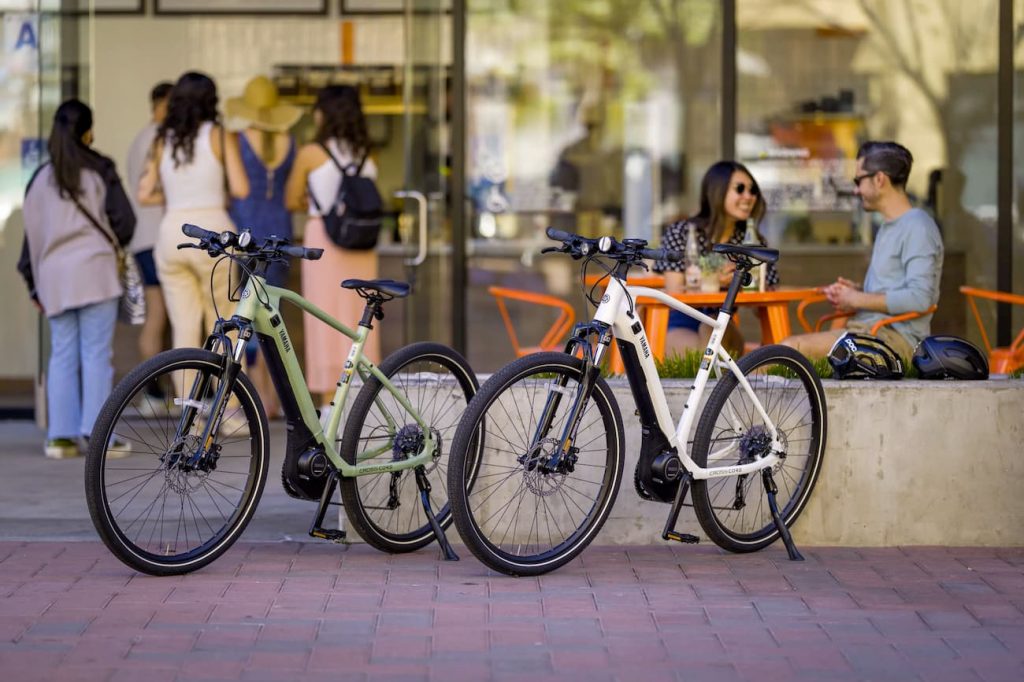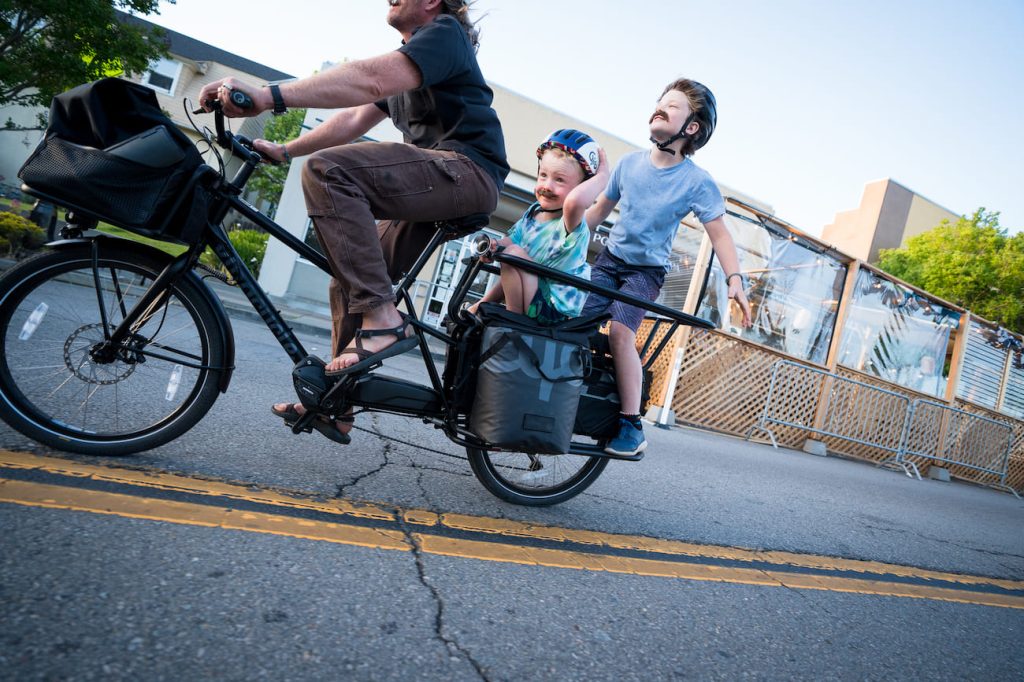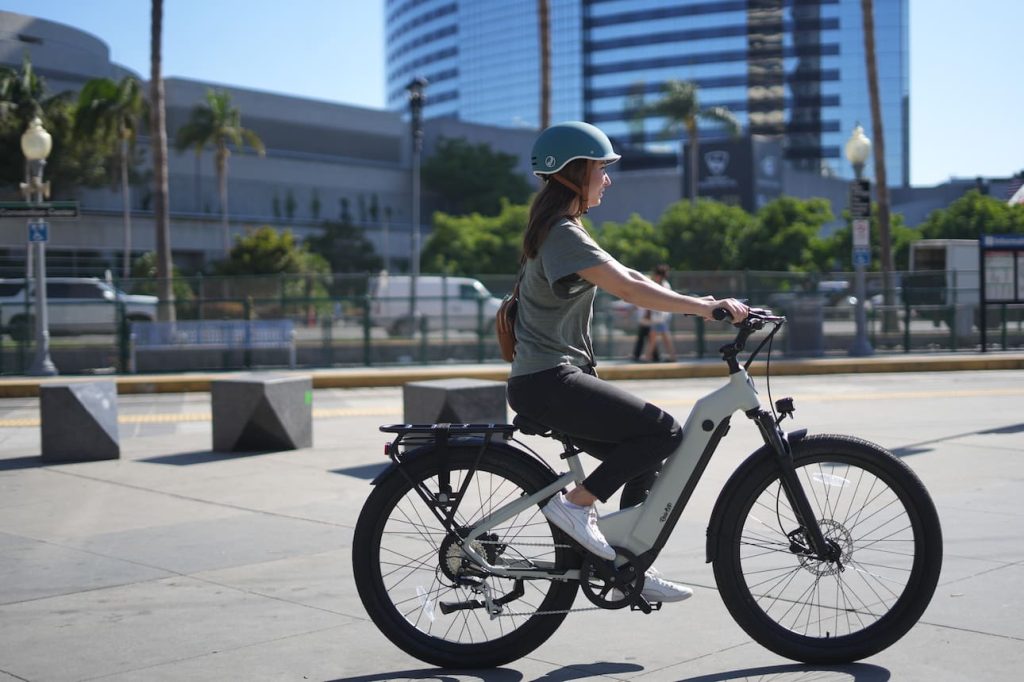
As electric bikes become increasingly popular in cities across the US, some in the media are trying to wrap their heads around this reported “electric bike craze.” But make no mistake, this isn’t some short-lived enthusiasm or a passing fad. This widespread adoption of e-bikes by young and old alike is merely the first signs of a paradigm shift.
That’s right, welcome to the future.
Sure, the car is still king in the US. But not like it once was.
The rate of US teens seeking driver’s licenses has continuously dropped for decades. The reasons are myriad. Cars are more expensive than ever. Wages haven’t kept up with inflation. Cities are slowly becoming more navigable without cars. Young people care more about the environment because they’re the ones who will have to survive it. The reasons go on and on.
But the newest reason added to the list rolls in on two wheels. Not the traditional bike, but the electric bike.

Unlike pedal bicycles, whose sales have been on a steady decline outside of the pandemic-induced boost, electric bicycles are skyrocketing in popularity. They give the same freedom of movement as a pedal bicycle, yet are easier to ride with the motor-assisted pedaling. That lets people go faster and travel longer distances than they previously thought possible. Throttle enabled e-bikes are even easier to use as they don’t even require pedaling – they can basically be used as 20 mph (32 km/h) mopeds. At that speed, they’re fast enough for people to cruise through a city easily yet don’t come with the same power and speed concerns that have traditionally turned most commuters away from motorcycles.
Add in the free parking, low entry cost, nearly zero maintenance cost, as well as turning commutes and errands from slogs into joy rides, and you’ve got yourself a recipe for a new transportation paradigm.
While electric bikes were once the domain of elderly riders in the US that had discovered a way to get back on two wheels for recreational rides and light fitness, now the new technology is found across the age spectrum from kids to adults. And it’s no longer just about Sunday morning cruises or getting in a workout; electric bikes are now widely used as serious transportation and utility vehicles in their own right.

As much of the media is still trying to understand the phenomenon of this massive growth in e-bike use, cities are already grappling with just how to handle it. Not only are cities around the US seeing their own rise in e-bike usage, but several are helping to support the shift away from cars by providing incentives for purchasing electric bikes.
Even without incentives though, e-bikes are surprisingly affordable. Like anything, you’ll find fancier expensive options. But a good e-bike can be bought for under $1,000. When you compare that to the cheapest $40,000 Tesla, you can see why young people are moving to e-bikes in droves.
That massive adoption rate among younger riders though has also lead to questions about safe riding. Santa Barbara City Councilmember Oscar Gutierrez, himself an electric bike rider, explained to the Independent that he wholeheartedly believes that most e-bike riders are “law abiding, responsible, and considerate,” but that some reckless riders are “bad actors” that give a bad name to everyone.
Cities and states around the country are seeking solutions to help regulate and manage the growing influx of e-bike riders. Many are quickly adding bike lanes to help provide safer cycling areas away from the leading cause of death among bike riders: cars. Others are proposing rider education programs for those that don’t yet have driver’s licenses, such as a new bill proposed in California that would create a simpler “rider’s license” e-bike riders that use public roads but have never taken driver’s education or gotten a driver’s license.
On one side of the issue, some argue that cities should take a light touch, making it safer to cycle with better public infrastructure but without imposing burdensome regulations that could disincentivize cycling. Others believe that the increased number of riders, especially teens and young adults that have sometimes demonstrated a penchant for reckless riding, should be met more heavy-handedly with police crackdowns.
If you know me, then you may already know what I think. But if not, that’s what the next section is for.

Electrek’s Take
To me, this is a very simple issue. No matter who you are, as long as you are a road user, you should like seeing more usage of e-bikes, scooters, skateboards, pedal bikes, a solid pair of shoes or any other personal transportation device. Studies have shown that a mere 10% shift from car drivers to bike riders has resulted in a 40% reduction in traffic congestion. Even if you never touch an e-bike, you would benefit from supporting their increased use.
That being said, I absolutely understand the safety issue related to dangerous riding. Anyone being reckless on the roads should be held accountable. No one should use the roads recklessly, whether you’re on a 50-pound electric bike or a 5,000-pound car. Hmmm, it almost seems like one of those is drastically more dangerous than the other, now that I think of it.
Top comment by FreddyMac
The main issue we run into with our ebike is how to secure it in a way we are comfortable with. There are nowhere near enough bike racks at stores. Also Bike theft is rampant and the locks that hold the batteries into these bikes are easy to defeat. Inability for us to feel safe leaving $5K worth of ebikes parked outside limits how we use them. If cities want to encourage ebike adoption, the simplest thing they could do is add a lot more bike racks around town.
You’ll often hear complaints about cyclists running red lights, and that certainly can be dangerous. The implementation of rules like the Idaho stop can help make it safer for cyclists to navigate stops signs and red lights.
But to me, I think there is still room for compromise on e-bike safety. We’re going to see more riders every year, so we need to figure this out. In parallel to creating more safe, protected cycling lanes to separate bikes from the same roadways as cars, we should also enforce reckless driving laws, whether that means ticketing drivers or riders who endanger others on the road or in the bike lanes.
The tricky part, as it often does, comes down to enforcement. Police departments are often stretched thin, and ticketing bike-riding hooligans or car drivers parking in bike lanes isn’t a top priority. Perhaps we can find a little more funding (cough, tax car registrations, cough) to create an “E-bike Force” of bike cops who focus on this primarily. It could even be a force of good, not just doling out punishments. They could carry tire pumps and tools, helping cyclists and handing out education just as often as ticketing rule breakers. Who knows, maybe I’m a dreamer. But I think that if we actually care about making our cities safer, then we should prioritize getting more people on bikes and also find a way to educate riders and drivers while simultaneously enforcing rules that are designed to keep people safe.
Perfect, now people from both sides of the argument can crap on me in the comments section below.
FTC: We use income earning auto affiliate links. More.



Comments